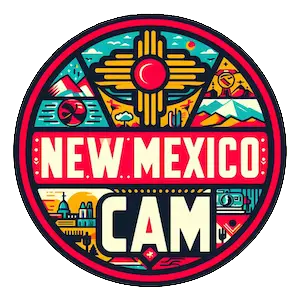Raton, NM Weather Cams
I-25 at Raton Pass Cam
I-25 at Raton Cam
I-25 at Glorieta Cam
I-25 at La Bajada Cam
Raton: Where the Santa Fe Trail Met the Rockies
Raton, NM Weather Cams. The history of Raton, New Mexico is inextricably tied to its location at a pivotal crossroads in the American Southwest. Nestled in the northeastern corner of New Mexico near the borders of Colorado and Oklahoma, Raton sits at the foot of the Raton Pass, a vital gateway through the Sangre de Cristo Mountains that was used for centuries by Native Americans, Spanish conquistadors, fur trappers, traders, and eventually settlers heading westward.
With a history as colorful as its sunsets and as diverse as its terrain, Raton has evolved from a humble railroad outpost to a thriving community brimming with cultural heritage and natural beauty.
The Early Days:
Raton’s story begins long before the arrival of European settlers. For centuries, the region was inhabited by indigenous peoples, including the Apache, Comanche, and Ute tribes, who roamed the vast plains and rugged mountains of the area. These early inhabitants left their mark on the land, with traces of their presence still evident in the archaeological sites scattered throughout the region.
The Railroad Era:
The turning point in Raton’s history came with the arrival of the Atchison, Topeka, and Santa Fe Railway in the late 19th century. In 1879, the railroad reached Raton Pass, a strategic mountain crossing on the route between Kansas City and Santa Fe. Almost overnight, Raton transformed from a remote frontier outpost into a bustling hub of commerce and transportation.
The railroad brought an influx of settlers, merchants, and adventurers to the area, fueling the growth of the town. Raton became a vital link in the transportation network of the American West, serving as a gateway to the rich mining districts of northern New Mexico and southern Colorado. The railroad also spurred the development of coal mining in the region, as Raton’s coal deposits were essential for powering the steam engines that traversed the rails.
Boom and Bust:
The late 19th and early 20th centuries were a time of rapid expansion and prosperity for Raton. The town flourished as businesses thrived, and new industries emerged to meet the demands of a growing population. Raton’s Main Street buzzed with activity, lined with saloons, hotels, and mercantile establishments catering to the needs of railroad travelers and local residents alike.
However, like many boomtowns of the era, Raton also experienced its share of challenges. Economic downturns, labor disputes, and fluctuations in the mining industry took their toll on the town, leading to periods of hardship and decline. Despite these setbacks, Raton persevered, adapting to changing circumstances and finding new ways to thrive in an ever-evolving world.
Cultural Crossroads:
Throughout its history, Raton has been a melting pot of cultures and traditions. The town’s diverse population includes descendants of Spanish colonists, Mexican immigrants, European settlers, and Native American tribes, each contributing to the rich tapestry of Raton’s cultural heritage. This diversity is celebrated in Raton’s vibrant arts scene, with local artists, musicians, and performers drawing inspiration from the town’s multicultural roots.
Raton’s cultural heritage is also evident in its architecture, with historic buildings reflecting a blend of Spanish, Victorian, and Western influences. From the elegant facades of Main Street to the rustic charm of adobe dwellings, Raton’s architectural landmarks tell the story of the town’s past and present.
Gateway to Adventure:
Today, Raton continues to serve as a gateway to adventure, attracting visitors from near and far with its stunning natural beauty and wealth of outdoor activities. Outdoor enthusiasts flock to nearby destinations such as Sugarite Canyon State Park, Capulin Volcano National Monument, and the scenic Santa Fe Trail, where they can hike, camp, and explore the rugged wilderness of northern New Mexico.
For history buffs, Raton offers a treasure trove of museums, historic sites, and cultural attractions, including the Raton Museum, the Shuler Theater, and the Historic Santa Fe Depot. These landmarks provide a glimpse into Raton’s past, preserving the stories and traditions of generations past for future generations to enjoy.
Looking to the Future:
As Raton looks to the future, the town remains committed to preserving its rich heritage while embracing new opportunities for growth and development. Efforts are underway to revitalize downtown, attract new businesses, and promote tourism, ensuring that Raton continues to thrive in the years to come.
With its storied past, vibrant culture, and breathtaking scenery, Raton remains a hidden gem of the American Southwest—a place where the spirit of the Old West lives on, and where the promise of adventure awaits around every corner. As travelers pass through Raton’s gates, they are welcomed not only to a town, but to a timeless journey through history, where the past meets the present and the future shines bright on the horizon.
For more information, visit the official Raton, New Mexico website.
